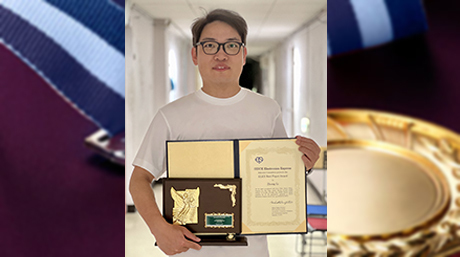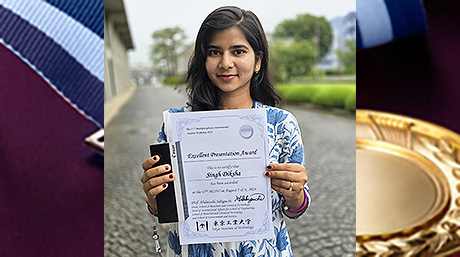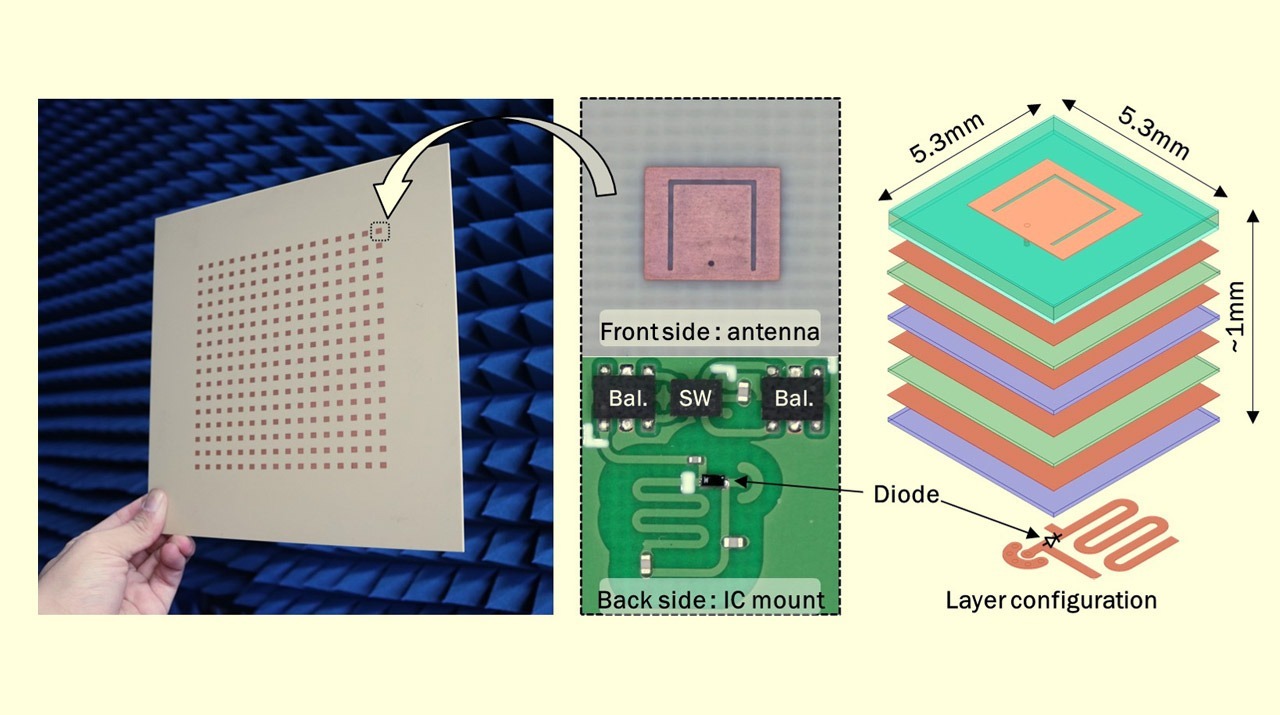Electrical and Electronic Engineering News
Electricity and Data Over-the-Air: The Simultaneous Transmission of 5G and Power
The potential of Millimeter-wave Wireless Power Transfer as a solution for Massive Internet of Things has finally been harnessed by researchers from Tokyo Tech, who have created a device for simultaneous transmission of power and 5G signal. This transceiver for 5G network signal is fully wirelessly powered and has high power conversion efficiency at large distances and angles.
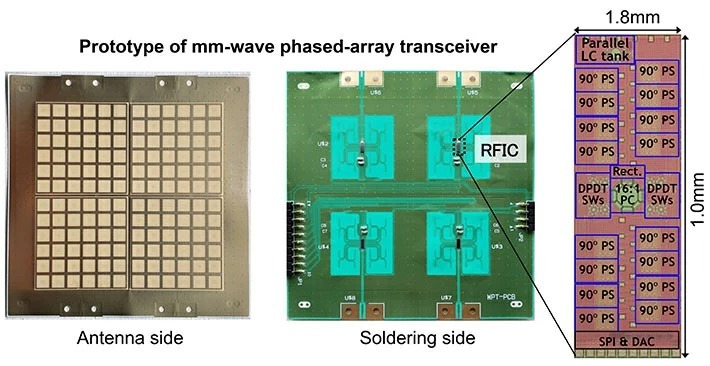
Figure 1. Prototype of a 64-element millimeter-wave band phased-array transceiver and integrated circuit
-
This could serve as the prototype for the transceiver.
Ever since Nikola Tesla first proposed the idea of wireless transfer of power, there have been multiple efforts to exploit this concept for different applications. A new way to do this is with 5G networks. As 5G networks start coming online, there is an expected associated increase in the scale of the Internet of Things network. With so many devices on the network, there is a growing need to make wirelessly powered devices that can work with 5G signals. The production of such devices has faced the same hurdles that a lot of wirelessly powered devices face—short transmission distances and a fixed direction from which power can be received.
Now, a team of scientists from Tokyo Institute of Technology (Tokyo Tech), led by Associate Professor Atsushi Shirane, have reported the production of a wirelessly powered transmitter-receiver for 5G networks that overcomes both of these problems. Their findings were presented during the 2022 IEEE Symposium on VLSI Technology & Circuits![]() . Dr. Shirane explains, "The millimeter-wave wireless power transfer system is a promising solution for massive Internet of Things, yet it has been hampered by technical problems. We were thus able to make a breakthrough by producing a 5G transceiver with high efficiency at big angles and distances."
. Dr. Shirane explains, "The millimeter-wave wireless power transfer system is a promising solution for massive Internet of Things, yet it has been hampered by technical problems. We were thus able to make a breakthrough by producing a 5G transceiver with high efficiency at big angles and distances."
The transmitter-receiver produced by the team is the first of its kind. The device has two modes, a receiving mode, and a transmitting mode. In the receiving mode, the device receives a 5G signal and a millimeter-wave power signal. This power signal activates the device and provides it with power. The device then enters the transmission mode and sends a 5G signal back in the same direction from which it initially received one. Thus, a device like this can easily communicate and be part of the Internet of Things without needing a separate plug point, unlike most current indoor Internet of Things devices. The device can generate power over a wide span of angles and distances and, thus, does not suffer from the challenges faced by previous wirelessly powered devices (see Figure 1 and 2).
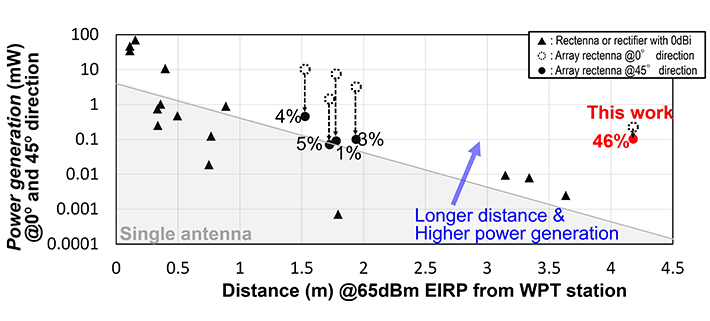
Figure 2. Higher power generation at longer distances
-
The graph demonstrates that how, as the beam steering increases from 0° to 45° during wireless power transmission, the present device can continue to generate 46% power—a much higher percentage than previous devices which would degrade to a few percent—while achieving more than twice the distance achieved by older devices.
Thus, with smaller devices like this, which require very little maintenance and additional infrastructure, the Internet of Things network can be expanded easily and make our world better connected. Dr. Shirane concludes, "This was the world's first simultaneous reception of power and communication signals with beam steering. We truly believe that technology like this can revolutionize the Internet of Things network and free it from the shackles that bind it today."
We are looking forward to this vision becoming a reality!
- Reference
| Authors : | Michihiro Ide, Yuasa Keito, Kato Sena, Dongwon You, Ashbir Aviat Fadila, Jian Pang, Atsushi Shirane, and Kenichi Okada |
| Session : |
C11: Wireless, Phased Arrays C11-1: A 28-GHz Fully-Passive Retro-Reflective Phased-Array Backscattering Transceiver for 5G Network with 24-GHz Beam-Steered Wireless Power Transfer (10:05 a.m. - 10:30 a.m. local time, Honolulu, Hawai) |
| Conference : | 2022 IEEE SYMPOSIUM ON VLSI TECHNOLOGY & CIRCUITS |
| Affiliations : | Institute of Innovative Research, Tokyo Institute of Technology |
- Introducing a Transceiver that Can Tap into the Higher Frequency Bands of 5G Networks | Tokyo Tech News
- Lean and mean: Maximizing 5G communications with an energy-efficient relay network | Tokyo Tech News
- Pushed to the Limit: A CMOS-based transceiver for beyond 5G applications at 300 GHz | Tokyo Tech News
- Greater Connectedness in Remote Areas: A Ka-band Transceiver for Satellite Communications | Tokyo Tech News
- Researchers develop a compact 28-GHz transceiver supporting dual-polarized MIMO | Tokyo Tech News
- Smallest all-digital circuit opens doors to 5 nm next-gen semiconductor | Tokyo Tech News
- A more accurate, low-cost 39 GHz beamforming transceiver for 5G communications | Tokyo Tech News
- Gearing up for 5G: A miniature, low-cost transceiver for fast, reliable communications | Tokyo Tech News
- Tinier and less power-hungry quantum atomic clock push toward intelligent IoT | Tokyo Tech News
- Kenichi Okada - Wiring the world wirelessly | Research Stories | Research
- Shirane Lab.
- Okada Lab.
- Atsushi Shirane | Researcher Finder - Tokyo Tech STAR Search
- Kenichi Okada | Researcher Finder - Tokyo Tech STAR Search
- Laboratory for Future Interdisciplinary Research of Science and Technology (FIRST)
- Institute for Innovation Research (IIR)
- Electrical and Electronic Engineering Graduate Major|Education|Department of Electrical and Electronic Engineering, School of Engineering
- Electrical and Electronic Engineering Undergraduate Major|Education|Department of Electrical and Electronic Engineering, School of Engineering
- Latest Research News
School of Engineering
—Creating New Industries and Advancing Civilization—
Information on School of Engineering inaugurated in April 2016
Further Information
Associate Professor Atsushi Shirane
Institute of Innovative Research,
Tokyo Institute of Technology
Email shirane@ee.e.titech.ac.jp
Tel +81-3-5734-3764

